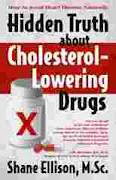Do you know that in the United States and across the U.K, high blood pressure or otherwise known as HYPERTENSION is responsible for more heart attack than stroke.
Hypertension affects about 25% of people living in America today and one third are unaware of this condition until it’s fatal. This is significantly more common in Africa Americans of both sexes than in other racial group.
Hypertension or High blood pressure is a medical condition in which fatty deposits in the blood vessels block and increase the resistance of blood flow thereby causing an increase in blood pressure against vessel wall. The pressure stresses the vessels that supplies blood to the heart muscles. The heart works harder to pump blood that circulates to all parts of the body tissues. The more blood the heart pumps, the smaller the arteries, then the higher the blood pressure.
If this condition persists, damage to the vessels and the heart will likely increase to a high extent the risk of a heart failure. Unfortunately in most cases, high blood pressure show no symptoms at all. And for this reason, it will be sensible to have your blood pressure checked from time to time.
Blood pressure is usually measured in the upper arm with an instrument called SPHYGMOMANOMETER which you might have seen lying on your doctor’s desk. It consists of an inflatable cuff that is placed around your upper arm and a tube of mercury that measures the pressure. The readings is measured in millimeters of mercury (mm Hg) and is written in two numbers with one number over the other, e.g. 120/80 mm Hg, both of which are important to your health.
The top number i.e. the 120 is called the Systolic blood pressure (SBP) which is the pressure in the arteries when the heart beats or contracts, while the lower number i.e. 80 is called the diastolic blood pressure (DBP), being the pressure in the arteries when the heart is resting between beats.
An average normal blood pressure for adults according to scientific study is said to be around 139/89 mm Hg or below. A systolic pressure of 140 mm Hg and a diastolic pressure of 90 mm Hg is a borderline of stage 1 hypertension where as 150/100 mm Hg or higher is definitely high and it’s stage 2 hypertension. Of course blood pressure varies considerably throughout the day and night. During sleep, when our system is relatively inactive, blood pressure falls because of the low demand for oxygen. It begins to rise when our day begin with activities. But be reassured that the doctors know best when and how to read your blood pressure.
Since high blood pressure appears to accelerates the development of plagues in the arterial wall, damaging the arterial lining and places an additional strain on the heart’s capacity to pump blood, there’s much bigger chance of developing Angina (chest pain) or heart attack.
The kidney plays an important role in regulating blood pressure. It secrets the hormone called RENIN, which cause arteries to contract and raise blood pressure flow. The kidney also control the fluid volume of blood as they retain salt in the blood stream. This salt attracts water thereby increasing the volume of blood that passes through arteries, so also the pressure increases.
Hypertension may develop as a result of some other medical disorder such as kidney or liver diseases. A high diet in salt could also elevate blood pressure in some people. Hereditary , lack of exercise and alcoholism plays a big role in raising blood pressure too.
To learn more about blood pressure and heart diseases Call 1-800-AHA-USA1 (1-800-242-8721) or visit http://www.americanheart.org
Knowledge is power, so Learn and Live!
Blood pressure : Take a hint
11:48 AM | chest pain, heart muscles, Hypertension, kidney disease, renin, thrombosis | 0 comments »
Subscribe to:
Post Comments (Atom)





0 comments
Post a Comment